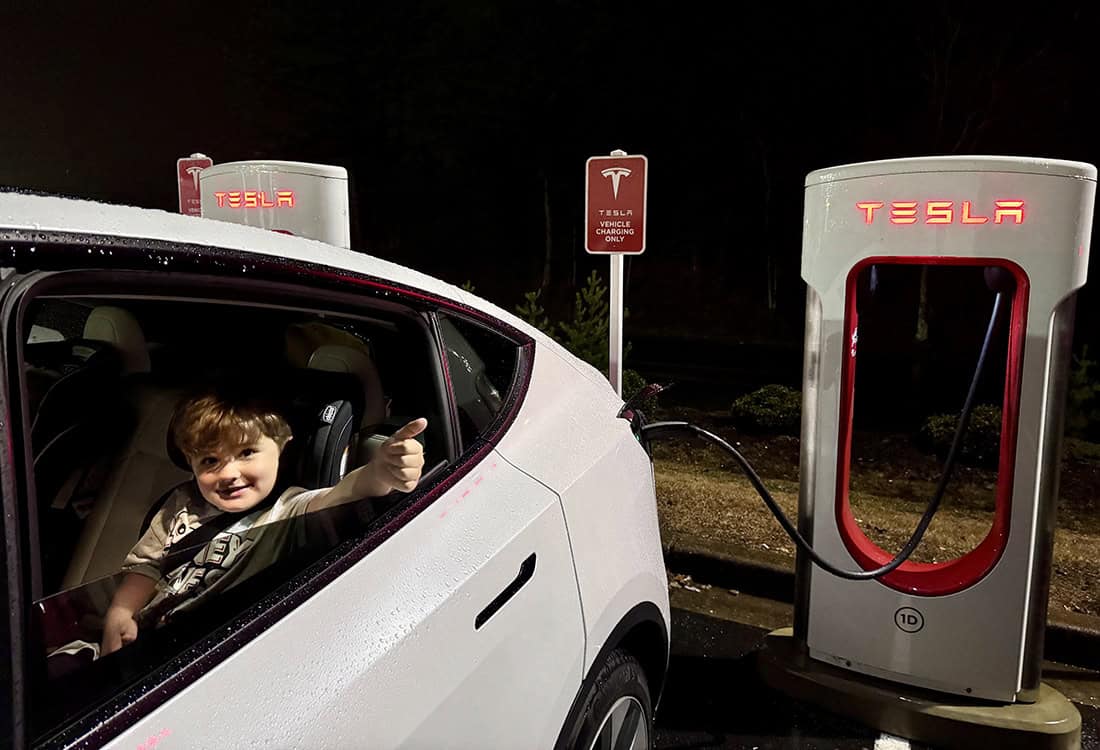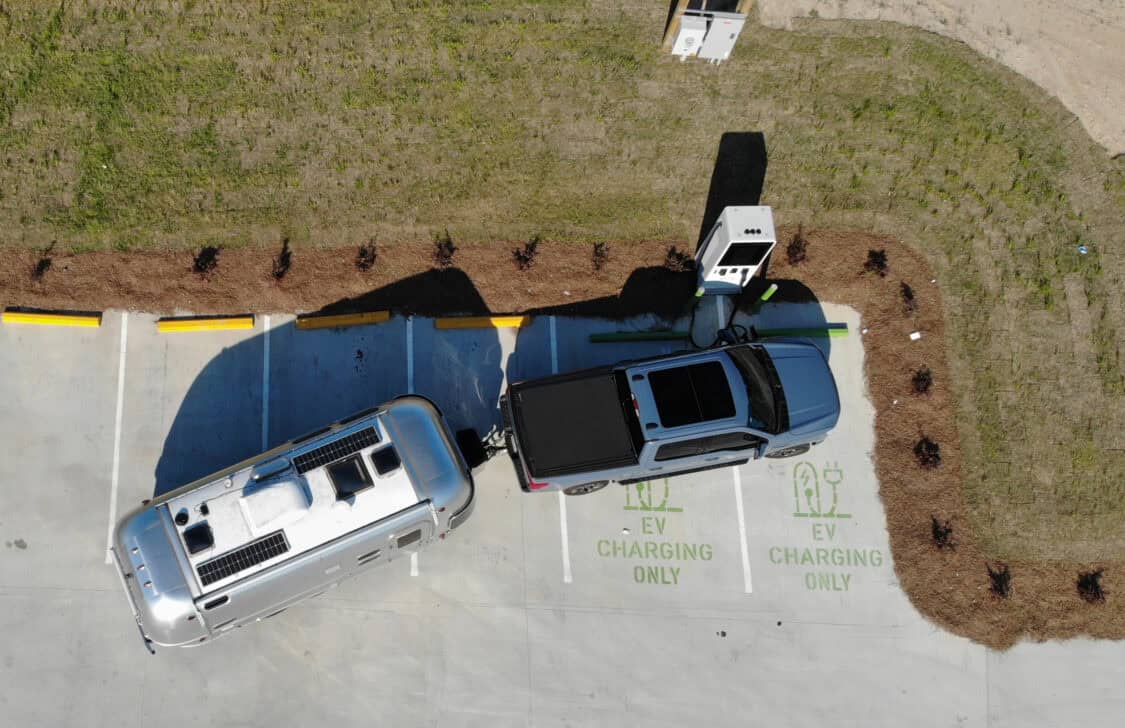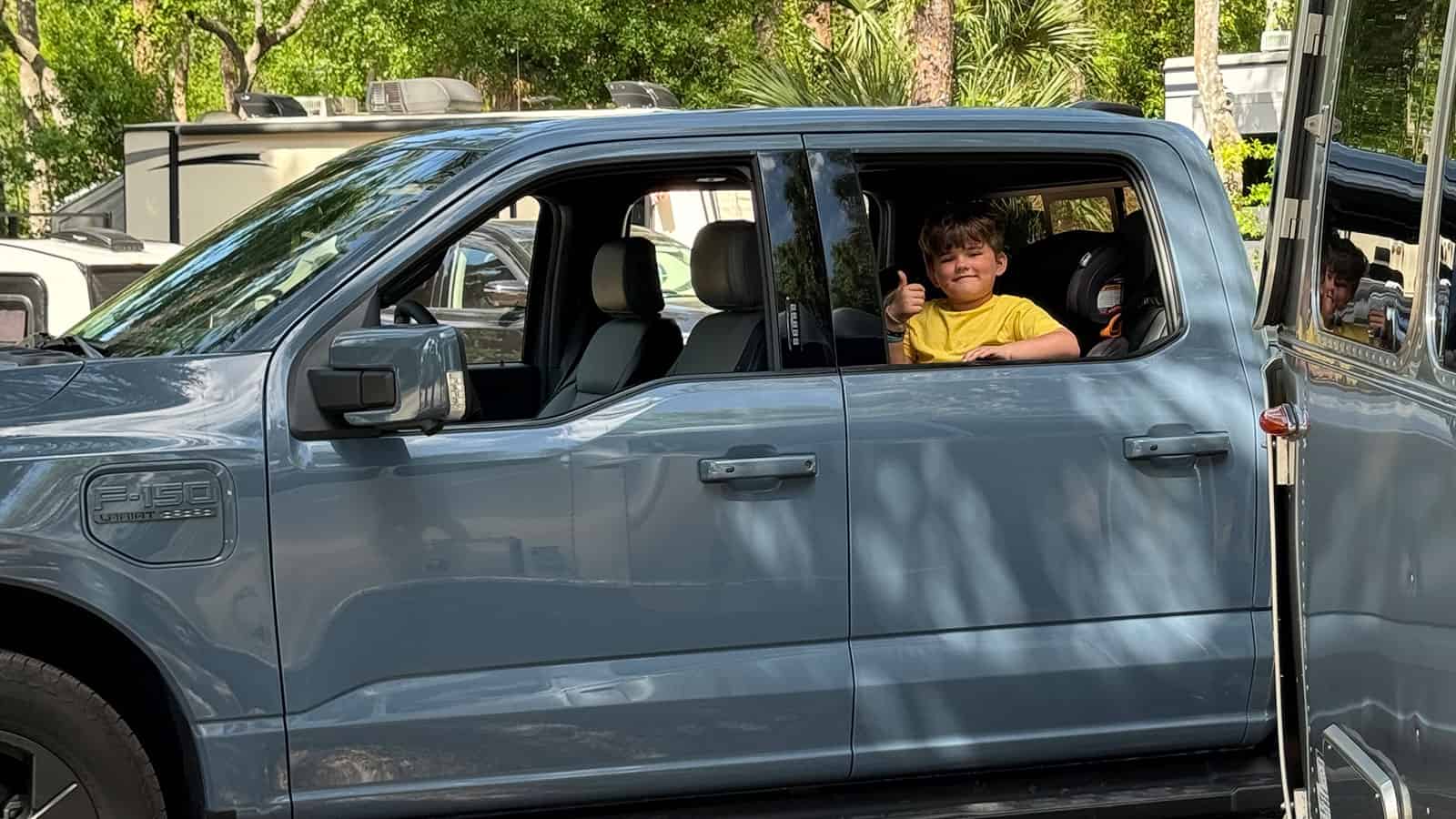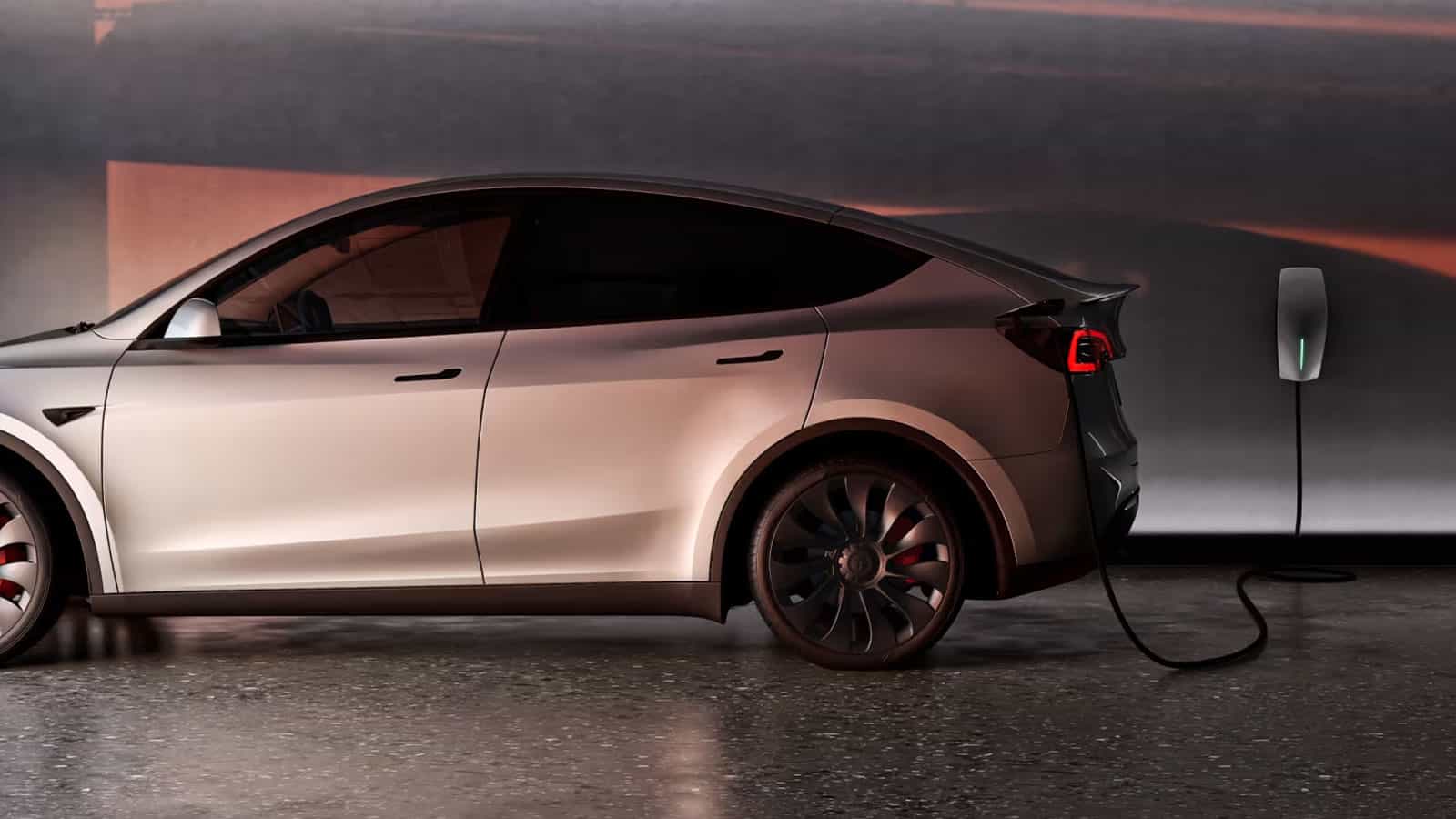- We share the planning, challenges, and benefits of using EVs for long-distance travel across the U.S.
- We also include trip insights with various EVs, like the Ford F-150 Lightning and Tesla Model Y, under diverse conditions.
- We realized that navigating EV road trips with children has its own challenges, highlighting how EV charging can align with a family’s needs for breaks.
Freedom — specifically, my sense of it — and independence are connected tightly to my access to vehicles. I have only owned, versus leased, primarily because I didn’t want a bank telling me how many miles a year I was permitted to drive. My family and I travel constantly and extensively. My firstborn had his passport before 6 months old and was joining me on trips to Europe. I motorcycle between the deep American South and as far north as Canada. Unfettered travel is more than aspirational for my kids and me.
ADVERTISEMENT
We are now a fully electrified family for personal ground transportation: my motorcycle, our cars, and our rentals. When it comes to answering if electric cars are good for road trips, we don’t feel stuck between a rock and hard place; we found it does require expectation and planning “renormalization” around different constraints and advantages.
To answer the binary question “Can you road trip in an EV?” our answer is a simple “yes, it is working for us.” We find it reconfirmed with each new first-hand experience, without exception to the desired destination.
Up and Down the Eastern Seaboard

Over the most recent Christmas holiday, I asked my 6-year-old if we should fly to NYC to celebrate or road trip up from Atlanta. “Road trip” he said, and we planned it out: ATL to D.C. through Philly to NYC.
We picked from hotels offering overnight charging (a filterable option in the Marriott Bonvoy and IHG apps now). This means we can roll in depleted at night and leave fully charged in the morning — an underappreciated EV perk that almost tops my list (that crown is consistently claimed and reclaimed by the immediate acceleration and flawless, spirited launches), and reduces the need for public charging along the trip.
ADVERTISEMENT
I’m grateful my two young kids are familiar travelers, yet the reality of their ages still means stopping at certain intervals, regardless of our powertrain’s energy source. In our Tesla Model Y at highway speeds, we can theoretically drive over four hours without recharging, yet in practice we tend to plan four 90-120 minute blocks each day: that generally leads to three stops. We tend to reserve the middle one for lunch or an excursion, and the bordering two stops are when we replace diapers, stretch, and rehydrate.


We combine EV charging with these biological intermissions. The limitation here is pickiness: We let the location of the charger determine our options during the stop, not the other way around. Exceptions to this include remote routes, like driving and hiking along the Blue Ridge Parkway, as there are no EV chargers or gas stations directly on the Parkway. Here we purposefully stopped and charged before we entered the parkway to have the operational flexibility of 250+ miles of range, which was sufficiently longer than we intended to go at a time.
Upping the Ante by Halving Our Range


Our adventures using passenger EVs felt well understood, tenured over tens of thousands of miles: Pacific Coast Highway, from California, to our favorite creamery Tillamook, and into Seattle. There’s been a trip to Banff, Canada, with temperatures dipping below -40. There was Florida Scenic Highway A1A down to the Keys, then over to Seaside. We’ve done Atlanta through the Appalachians, then New York, Boston, and to Maine, beyond Portland up to their capital in Augusta.
ADVERTISEMENT
How about an EV RV road trip from Atlanta through the “Deep South” to the beach? This year we decided to tackle a new challenge and use an EV to tow a travel trailer. We picked two icons, the Ford F-150 Lightning and Airstream Flying Cloud, and charted a 10-day route for our 13,000+ pounds. My principal concern: a halved driving range over a long rural distance.
It was my observation that towing EV ranges were being academically studied, while influencers were producing sponsored YouTube videos and measuring the results precisely, under controlled and consistent environments, along known routes. This content was useful for me to feel generally inspired by the capability for an EV RV trip, but I felt this approach failed to capture the full spectrum of the American spirit of wanderlust.
One of our five family values is adventure, and it thrives on unpredictability and less regimented conditions. Somewhat quixotically, we wanted to set off with major stops known — see a SpaceX launch in Cape Canaveral, spend a few days swimming in the ocean, visit Disney World — but specifically not plan where we would (or could) charge to make it happen.


That became the constraint of the trip: We would not go out of our way or use any special apps to plan this EV road trip. We would use the car’s built-in navigation to do the trip/charging for us and attempt to follow our standard practice: charge overnight, drive in 90-120 minute blocks, and opportunistically charge in-between. A crucial source of confidence came from Tesla opening up their gold-standard Superchargers to Ford EV drivers, substantially increasing our DC fast charger options.
ADVERTISEMENT
Successful or Stranded?


I entered that particular EV road trip with a number of anxieties: With our 23-foot trailer, would we even fit at chargers without disconnecting? Would our real-world towing range cover the longest distance between fast chargers? Could I set up campsites and disconnect/reconnect the trailer on my own? Would I be able to back up without any previous experience with these particular vehicles? Could I solo-parent two littles on a trip with multiple unknowns and all of us still have some fun?
We had a blast! The pre-trip anxieties did not materialize — we never got stranded or ran out of juice. We went surfing, witnessed a rocket launch live, and visited Mickey’s home turf. The real-world drivers we encountered along the way were supportive, accommodating, and genuinely curious. The most popular question: “What’s your range?” With our rig: 144 miles at 100% charge (versus 300+ without the trailer). The details of charging (cost, geometry, and speed) are worth chronicling independently in a future article.

Challenges certainly came up along the way, and almost all were more RV- than EV-related (consistent with my trailering naivety). My low point was related to an improper black water connection between the rig and campsite hookups, erring adjacent to the penultimate realization that I had failed to pack towels. After a quick bout of self-pity and a brushup of Hitchhiker’s Guide to the Galaxy key learnings, thankfully these were tactically overcome with a visit to a gift shop and hot shower.
The trip was a success. EVs work for RVs — and without significant preplanning — embodying our expectations for an American road trip and spirit of adventure.
ADVERTISEMENT

IMAGES: CORY HEWETT
FTC: We use income-earning auto affiliate links. Learn more.



























